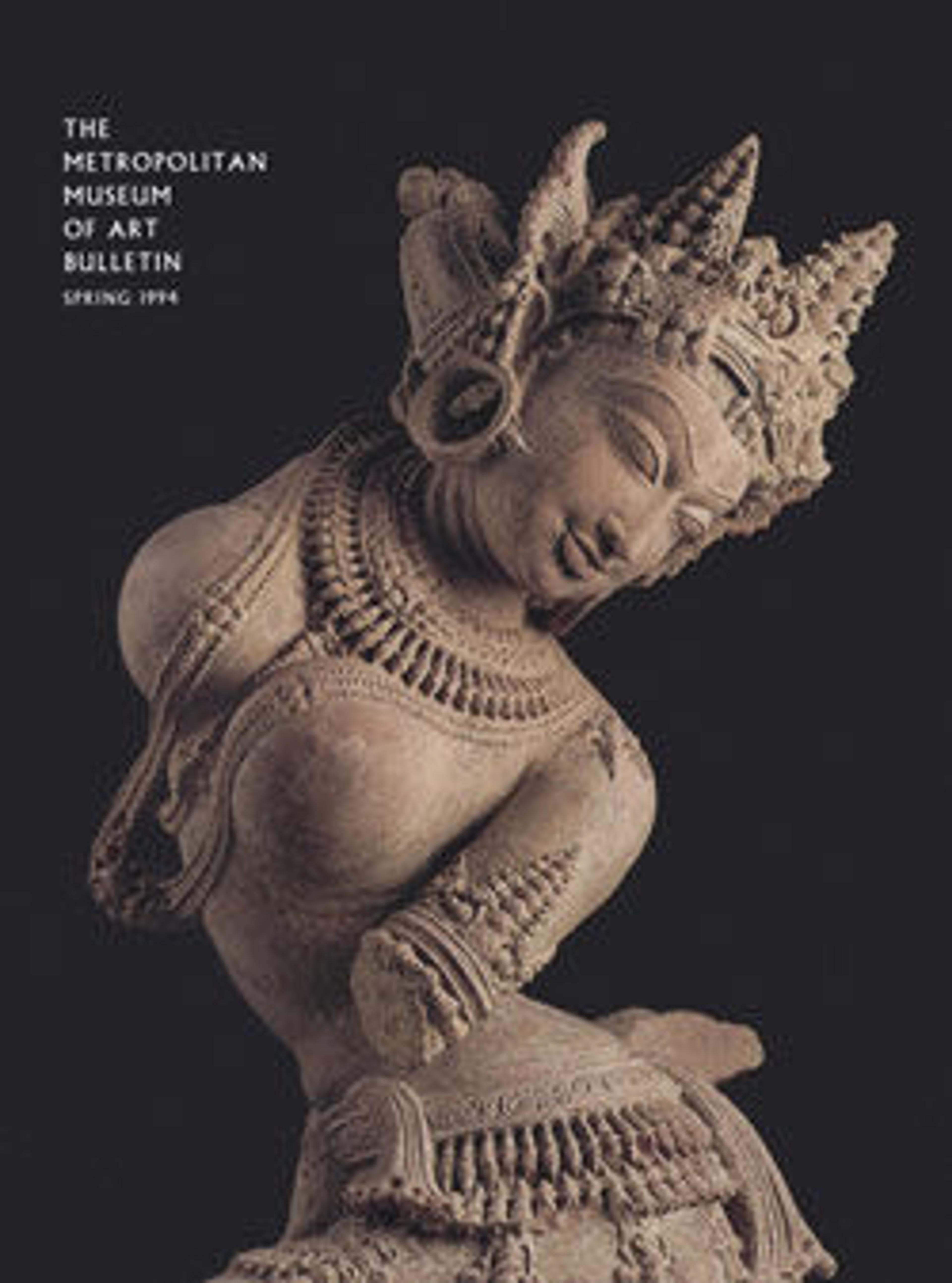Bodhisattva Avalokiteshvara
This bodhisattva of compassion is represented as an ascetic, dressed in a waistcloth secured with a cord, the details incised into the contours of his torso. He has a flayed antelope skin (ajina) across his left shoulder, an attribute of the earliest representations of this bodhisattva in early seventh-century northern India. The cult of Avalokiteshvara assumed special importance in Mahayana Buddhism during this period. Soon after its development in India, it was shared with Southeast Asian practitioners.
cat. no. 133
cat. no. 133
Artwork Details
- Title:Bodhisattva Avalokiteshvara
- Date:second half of the 7th century
- Culture:Southern Thailand
- Medium:Sandstone
- Dimensions:H. 17 3/4 in. (45.1 cm); W. 5 3/4 in. (14.6 cm); D. 2 7/8 in. (7.3 cm)
- Classification:Sculpture
- Credit Line:Samuel Eilenberg Collection, Ex Coll.: Columbia University, Purchase, Lila Acheson Wallace Gift, 1987
- Object Number:1987.218.16
- Curatorial Department: Asian Art
More Artwork
Research Resources
The Met provides unparalleled resources for research and welcomes an international community of students and scholars. The Met's Open Access API is where creators and researchers can connect to the The Met collection. Open Access data and public domain images are available for unrestricted commercial and noncommercial use without permission or fee.
To request images under copyright and other restrictions, please use this Image Request form.
Feedback
We continue to research and examine historical and cultural context for objects in The Met collection. If you have comments or questions about this object record, please contact us using the form below. The Museum looks forward to receiving your comments.
